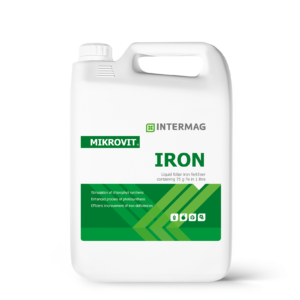CROP GUIDES: RYE – WINTER RYE
EXAMPLE OF THE PROGRAM
In progress…
CROP DESCRIPTION: RYE – WINTER RYE
Rye grain is used for the production of flour, intended for baking bread. It is rich in carbohydrates, especially starch, which makes it suitable for alcohol (ethanol) production.
Another way of using rye is as green fodder or as catch crops.
Rye has low plant and soil nutritional requirements. It is the species best adapted for growing on poor in nutrients light soils. It is also tolerant to acidic soil pH (pH 4.5–6.5). For this reason it is usually grown extensively on the poorest soils on the farm.
This results in low grain yields, because plants grown on poor soils, without proper fertilization – yield poorly. Moreover, it should be noted that in acidic soil conditions the main nutrients (nitrogen, phosphorus, potassium, magnesium) are poorly available for plants. In the case of phosphorus – availability for plants is additionally limited by low soil temperature.
A well-developed rye root system allows better water uptake from deeper soil layers, and thus better resistance to temporary droughts. It also enables better nutrient uptake from the soil. Other rye cultivation advantages include: low sensitivity to soil acidity, low thermal requirements during the entire growing season and winter frost resistance.
Obtaining high yields of rye is possible in intensive cultivation, with appropriately selected varieties and with proper crop maintenance taking into account, among others, optimal soil fertilization and foliar plant nutrition.
Two types of rye are grown: winter and spring rye.
In the cultivation of winter rye, it is very important to choose the sowing date so that the plants develop properly in a sufficiently long period of autumn vegetation.
Winter rye yields best when tillering is completed in the autumn, before winter dormancy stage of plant growth.
During this time, the phosphorus (P) uptake from the soil is sometimes inhibited, e.g. when the soil temperature drops below 12°C. Therefore, foliar nutrition with phosphorus (GROWON® or PLONVIT® FOSTAR or PLONVIT® PHOSPHO) – has very beneficial effect for development of young plants. The ROOTSTAR™ activator is also used to intensify the development of the root system. The foliar supply of micronutrients (PLONVIT® CEREALS) intensifies the uptake of nutrients from the soil. Also, it has a positive effect on plants condition and it strengthens the tillering process and increases the plants winter hardiness.
Rye begins its spring vegetation very early, when the air temperature reaches 2–3° C.
Optimal and early enough supply plants with nitrogen (N) has the greatest impact on the quantity and quality of grain.
In order to increase nitrogen uptake and yield forming efficiency, the availability of other nutrients for plants is necessary: phosphorus (P), potassium (K), magnesium (Mg), sulphur (S) and microelements.
Therefore, even in very economical rye cultivation technology, it is recommended to support soil fertilization with foliar feeding: with macroelements (PLONVIT® OPTY or PLONVIT® GEL 20/20/20+micro, magnesium sulphate) and microelements (PLONVIT® CEREALS).
Of the micronutrients, a special role is played by: manganese (Mn) and copper (Cu).
The most effective fertilizers that supply these microelements are:
- manganese (Mn) – AMINO ULTRA® Mn-22, MIKROCHELAT™ Mn-13, MIKROVIT® MANGANESE
- copper (Cu) – AMINO ULTRA® Cu-24, MIKROCHELAT™ Cu-15 or MIKROVIT® COPPER.
The good condition of plants throughout the growing season determines the rye yield.
Even short-term nutrient deficiency may have a negative impact on plant growth and yield. Therefore, it is necessary comprehensive assessment of the requirements of the plants at any stage of their development. This will allow them to be properly fed and biostimulated.
INTERMAG’s wide range of products, allows you to develop your own individual foliar fertilization and biostimulation program, considering local soil conditions, crop intensity, stage of plant development and availability of various products.
Particularly noteworthy is the highly alkaline fertilizer ALKALIN™, which, in addition to the basic functions of bringing in nutrients, has shielding properties for plants: ALKALIN™ PK 10:20.
All these presented actions significantly affect the yield increase and its quality parameters.
PRODUCTS RECOMMENDED IN FEEDING PROGRAMS
-

TYTANIT®
MORE -

OPTYSIL®
MORE -

AMINOPRIM®
MORE -

GROWON®
MORE -

ROOTSTAR®
MORE -

BACTIM® SOIL
MORE -

AMINO ULTRA®Cu-24
MORE -

AMINO ULTRA®Mn-22
MORE -

MIKROCHELAT™ Cu-15
MORE -

MIKROCHELAT™ Mn-13
MORE -

MIKROCHELAT™ Zn-15
MORE -

PLONVIT® CEREALS
MORE -

MIKROVIT® COPPER
MORE -

MIKROVIT® IRON
MORE -

MIKROVIT® MANGANESE
MORE -

MIKROKOMPLEX™
MORE -

PLONVIT® NITROMAG
MORE -

PLONVIT® FOSTAR
MORE -

PLONVIT® KALPRIM
MORE -

PLONVIT®GEL 20/20/20
MORE -

PLONVIT®™ UNI PK 14:24
MORE -

PLONVIT® OPTY
MORE -

PLONVIT® NITRO
MORE -

PLONVIT®PHOSPHO
MORE -

PLONVIT® KALI
MORE -

ALKALIN™ PK 10:20
MORE -

FASTER®
MORE -

ADITENS™ MAX
MORE -

STRETCH™
MORE -

MAGNESIUM SULFATE HEPTAHYDRATE
MORE